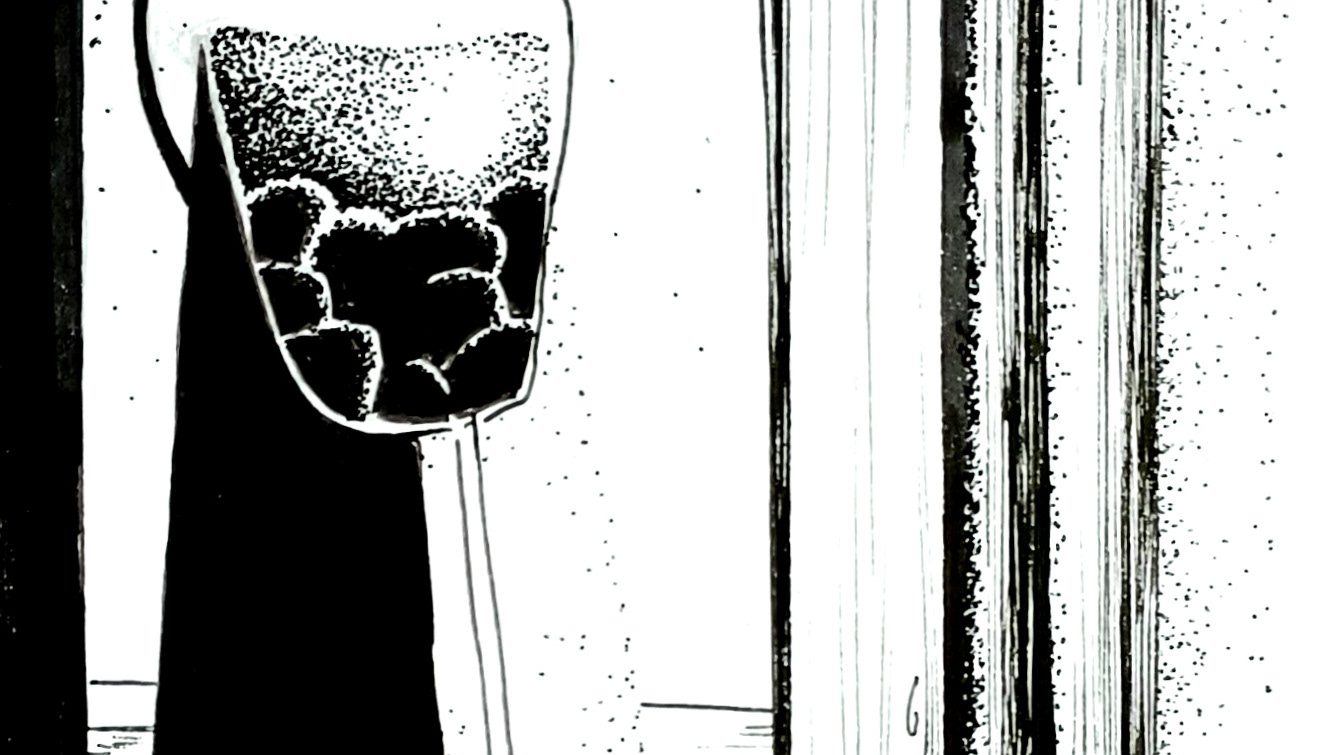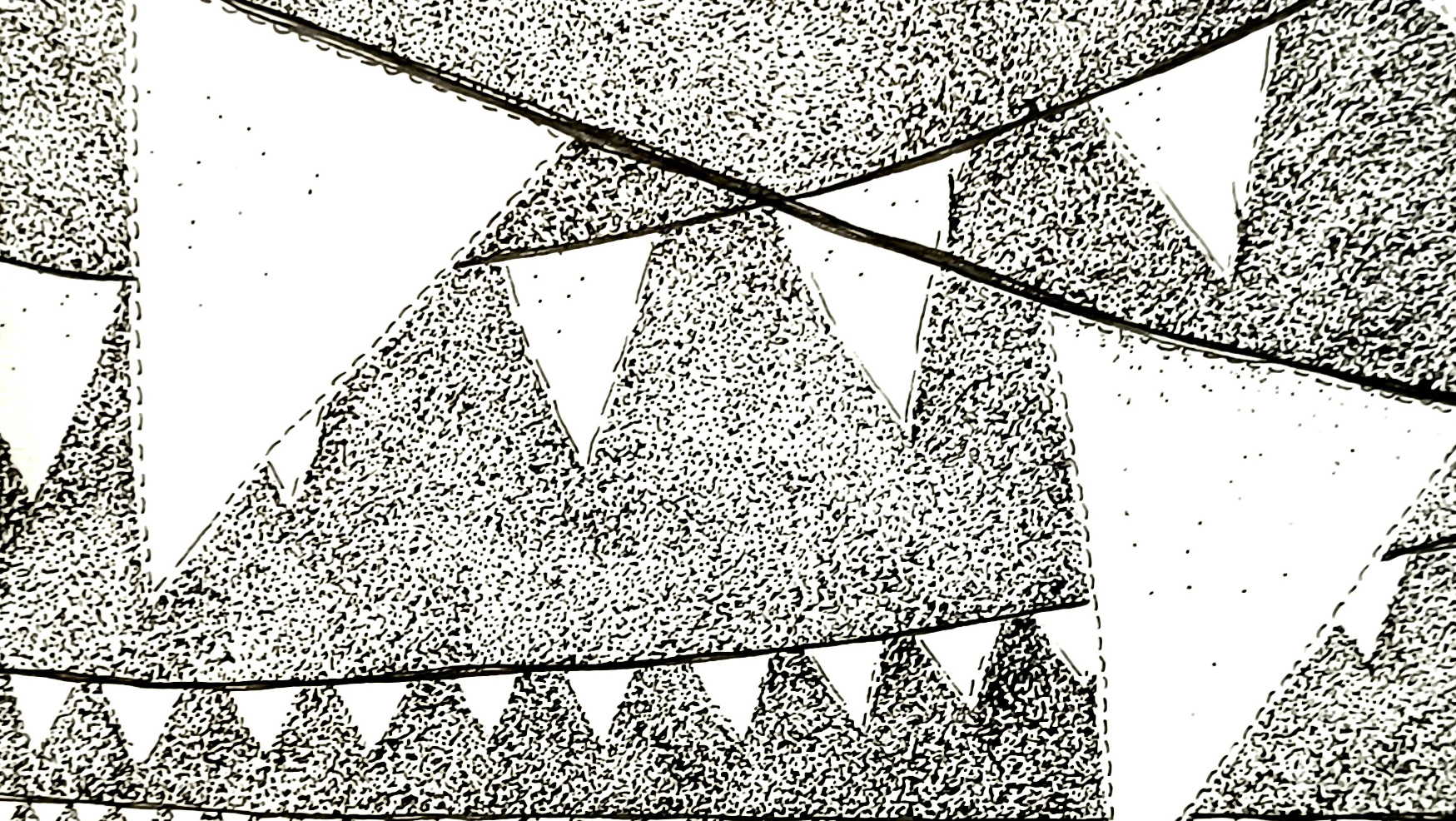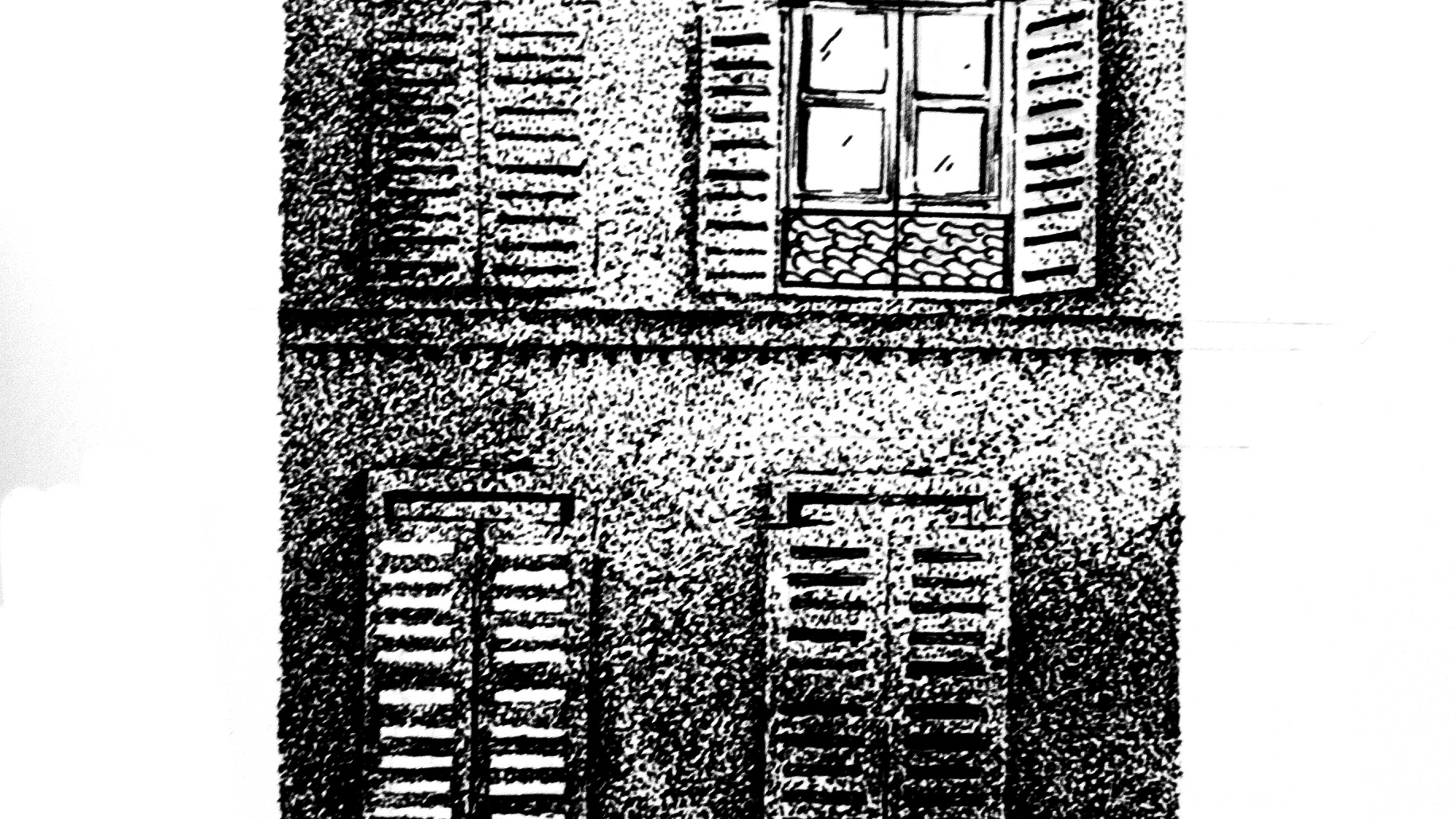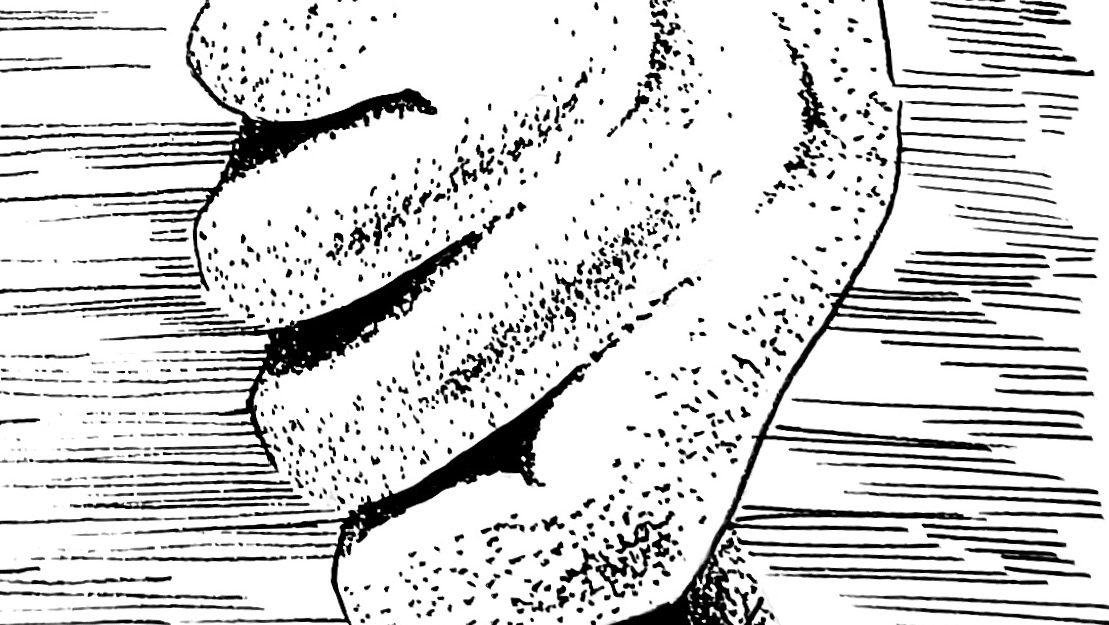
the second entrance
Today is the 26th of January 1943, and the train has stopped. Most of the women are asleep, those who are still awake are unable to locate the city where the train has stopped, it is much too dark.
Helene knows one thing. Wherever they are, she won't step out of this wagon. She heard stories from her friends, stories about the worst place on earth, a prison camp that was built to assassinate.
Back in 1940, Helene was a seamstress working with her mother in Paris. She had a good relationship with her clients, based on trust and respect. But they were all living in a country which had an uneven relationship to its citizen.
The armistice between France and Germany didn't include any specifics about the jewish population in France yet all laws in Germany were to be applied in France, including those related to the precarisation of the jewish population.
On the 27th of September 1940, german occupation forces published an ordinance defining "who is a jew". A month later, it was defined what the jewish population was allowed to do as a profession, where they were allowed to go, what they were allowed to own. Each time the french government agreed.
In 1941, the first specifically skilled jewish french were regrouped in french internment camps such as Drancy or the Velodrome d'hiver. More and more gatherings occured, all those people were being sent somewhere, there was a reason behind it.
Helene wasn't jewish yet some of her clients were, and they needed help. She started hiding her clients, at her place, at her work,... She did her best to help. They explained her the years of persecution, harassment, and belittling. And they told her the stories they heard of killing camps, so far east that no one would know, wrapped in darkness.
Helene tried to get out of internment camps some of the people she knew. But that was one step too far to the french authorities, who saw this as suspicious and investigated her. It didn't take long before she was arrested in October 1942.
Back in the present, the women spend the entire night inside the wagons. It is silent, cold, so much colder than in France.
The next morning is brutal, the women can hear dogs shouting , the whistles of the guards, screams, hits. Josee, the wagon's natural leader, gives everyone the necessary motivational speech. Whatever happens, they are united and prepared.
The wagon door finally opens, chaos starts. The guards lose no time, they grab the women's ankles and pull them out of the train. Even those who are trying to get out swiftly are pulled with violence. There is no explanation, no direction, nothing, only violence.
One of the women loses her balance and drops her luggage on the side. As she leaves the group to attempt to reach it, a guard unleashes his dog on her. Josee jumps off the train and runs to her, pulling her away from the dog's teeth. Thankfully, the dog only ripped the clothes, but Josee is angry, she won't let it pass, and stands to the guard who was supposed to hold the dog. She yells at him, how could he have been so careless with his dog? He replies by hitting her in the belly with his lead baton. Josee loses her balance, 2 women need to hold her so she doesn't fall.
Helene is the last to leave the wagon. She doesn't want to, but she has no choice. Helene's biggest fear is to meet with a client there, someone she couldn't have hid or tried to help. As she is forced out, she faces a light frozen landscape, darkness can be wrapped in snow apparently.
The women are ordered to walk to a camp in the distance, like a black stain in a greyish landscape. The ground is slippery, the luggages they are all carrying are heavy, it is a tough walk. The women meet with other prisoners, it is a shock, they never met men or women looking like this, almost all alike, too thin for their clothes, with a blank expression on their faces.
Then they see a sign in german, “vernichtungslager”. Does it mean camp nothing? Or camp of creating nothing? Or is it camp of annihilation? Or extermination? Only Helene knows exactly what it means, her worst fear is about to become reality.
The panic grows among the group, with each step bringing them closer to the camp’s entrance. Yet one woman starts humming the french anthem. Another one hums, she is followed by another woman, who sings a little louder. The chain keeps on enlarging, soon, all 230 women of the train sing the national french anthem in one strong voice. An unbreakable force is moving towards Birkenau, a force not even the guards, the dogs, or the SS, could shatter.
Maybe some women sing because they are scared, they also sing for courage. Their voices are heard in the whole camp, everyone stops whatever they are doing, everyone listens.
This is the voice of the resistance.
Notes
Thank you for listening to this episode of 31000/45000, the story of 2 trains of french members of the resistance. My name is Matthieu Landour Engel and this is the second episode regarding the women, the 31000.
This episode was about Helene Hascoet, and the arrival of the women in a place they didn’t yet know.
This episode is a good opportunity to lay out a few more informations of the deportation of the jewish population in France, which is also called the holocaust in france.
About 75,000 Jews were deported from France to concentration camps and death camps between 1940 and 1944. The french Jewish population was gathered in camps such as Drancy, Beaune-La-Rolande, Pithiviers and Royallieu.
Then, they were transported by cattle trains, mostly to Auschwitz-Birkenau. The first transport was on the 27th of march 1942, the last on the 31st of July 1944.
Those deportations have always been a subject of debate in france, as to whether the french government was responsible or not for the fate of the french jewish population. Simply put, the laws were originally german laws, which were supposed to be applied on the occupied territories. That explains why it felt better for the jewish population to attempt to cross the border and stay in the french free zone, where these laws were not applied. The Vichy regime, followed those laws in the occupied zone and then applied them, the french authorities mostly carried on the task of the arrestation. So there is an obvious degree of responsibility on the french government, and that’s final. Yet it took an incredible amount of time for the french government to admit that responsibility. It took 50 years, a lot was thanks to people like the Klarsfeld couple, whose extensive research revealed the government’s complicity.
Only in 1995 did French President Jacques Chirac acknowledged French responsibility. "These dark hours forever sully our history and are an insult to our past and our traditions," he said. "Yes, the criminal folly of the occupiers was seconded by the French, by the French state."
The french population, for the most part, was blind to what happened, it looked mostly the other way, which has to be linked to the atmosphere of anti semitism that existed at the time.
That being said, a small percentage of the population tried to help the jewish population, people like Helene Hascoet for example. There are many examples of citizen trying to help out, yet they were unfortunately a minority. In 1944, with the war ending in France, and the french population noticing more the deportations, the opinion started to shift and the people started to disagree more. It unfortunately didn’t help much, as the government implemented a new police, the Milice, which doubled its efforts to chase the jewish population.
Knowledge of extermination camps back in 1942 was low, but some stories came out. Those were hard to believe stories at the time unfortunately. So there was no reason for the 31000 to know or understand that where they arrived was an extermination camp. I took the assumption that Helene Hascoet was aware of such camp, she may have heard stories from her clients.
The scene where the women get off the train is an invention, I have no ground to prove it happened precisely like that. I only assumed it could have happened this way, given the personality and fate of Maria Josee Alonso. I also have no way of knowing which women were in which of the 4 wagons.
A question remains about the identity of the first woman singing the national anthem. A source mentions Danielle Casanova, another source explains that Danielle Casanova encouraged 2 young girls to sing. The reason may have been that Danielle Casanova didn’t have a good singing voice and was aware ot it. Yet she wished to encourage her group in a way or another so she seeked the help of 2 young girls she knew had a good singing voice. Whatever the truth is remains unknown, what is known is that the entire group sang the french national anthem as they entered the Birkenau camp.
Singing was an important tool for the prisoners, women and men, it helped keeping a high spirit. But it was very brave and surprising for the women to start singing as they arrived. It surprised the guards and SS, who didn’t try to stop them, and it gave an impression of bravery amongst the other prisoners. Helene Hascoet did not survive.
I have been trying to find Helene Hascoet’s relatives, unfortunately, my research was unsuccessful. If by any chance, you know of someone related to her please let me know, I would be very pleased to get in touch and make sure the text I wrote doesn’t contain any errors.
My sources for this story are the book le convoi du 24 janvier by Charlotte Delbo. Another source is the book A train in winter by Caroline Moorehead. Caroline Moorehead is another grand author, I highly recommend her work. My sources also are red triangles in Auschwitz, by Claudine Cardon Hamet, the website deportes-politiques-auschwitz.fr, memoire vive and the foundation for the memory of deportation website and the fantastic website auschwitz.org .
Thank you very much for listening, the next episode will be about Louise magadur, and the shave.









